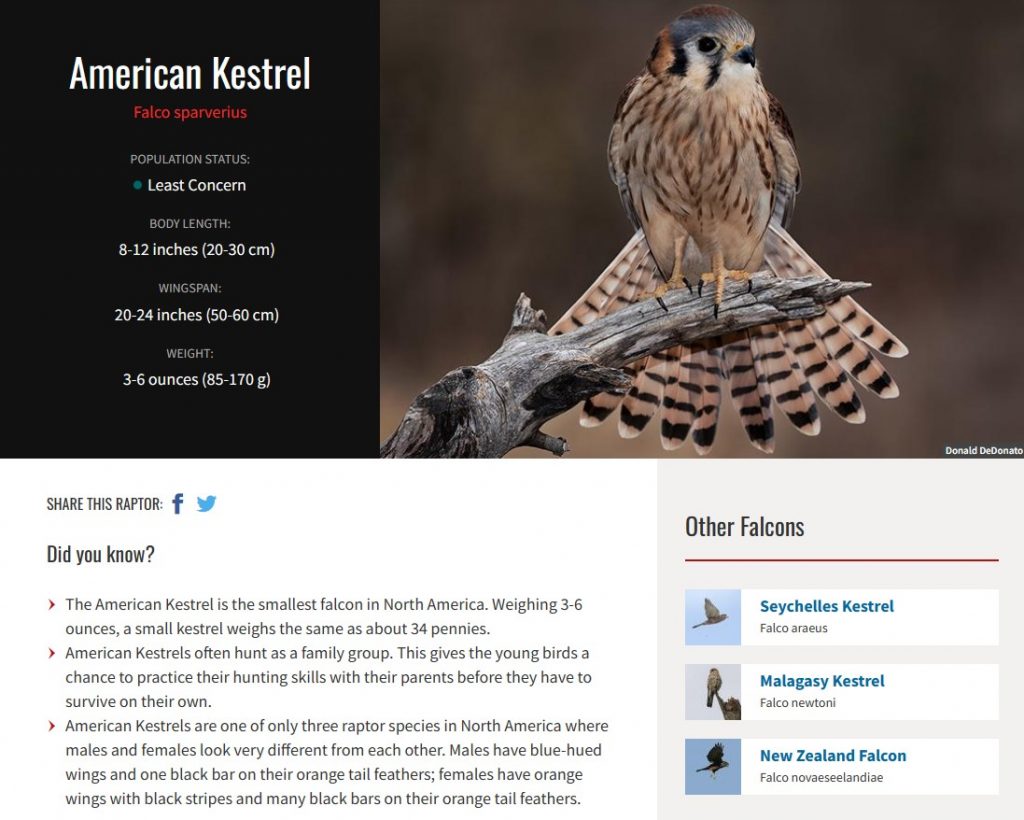Did you know?
- The Peregrine Falcon is famous for its fast flying. Biologists have clocked it diving at speeds of over 200 mph. That’s about as fast as a race car goes!
- These falcons have adapted well to life in large cities, where they feed on birds like pigeons and starlings, and nest on the ledges of tall buildings.
- Like many raptors, Peregrine Falcon females are larger than the males.
- The Peregrine Falcon was removed from the Endangered Species list in 1999, thanks to efforts by The Peregrine Fund and many other organizations and individuals.
Where they live
From Morocco to Malaysia, Greenland to Greece, Australia to Argentina, and India to Iraq, Peregrine Falcons live and breed on every continent in the world except Antarctica. They are strong, efficient flyers and skilled at catching a variety of prey from small songbirds to large ducks. This versatility allows them to live in almost any type of climate and habitat – and they do!
Deserts, seashores, mangroves, wetlands, tundra, grasslands, dry forests, scrubland, and craggy mountains are places one might find a Peregrine Falcon. The most common factor among these different locations is the presence of good nesting habitat. These falcons like to nest in high cliffs, but in cities, Peregrine Falcons use tall buildings or bridges instead. As in many urban settings, a resident falcon family returns from migration each spring to raise young on the ledge of a tall building in downtown Boise, Idaho.
What they do
Among the most impressive birds to watch hunt, Peregrine Falcons are known for their high speeds, impressive aerial acrobatics, and unmistakable grace. But Peregrine Falcons not only fly fast, some populations fly incredibly long distances, too. In the northern part of their range, Peregrine Falcons are migratory, which means they travel from their breeding grounds to non-breeding grounds and back every year. Some of these individuals travel from the Arctic nearly to Antarctica, making a yearly round trip journey of more than 20,000 miles. That would be like crossing the entire United States seven times in one year!
Peregrine Falcons that live closer to the equator tend not to migrate. This makes sense if you think about one definition of migration: the seasonal movement from one area to another for the purpose of finding food or to reproduce, usually triggered by a change in the weather. Since temperatures along the equator are not as extreme as in the northern and southern regions of the world, there tends to be more year-round prey. With more available prey, there is no reason for a Peregrine Falcon to leave its home. Even when they are raising young, the tropical regions of the world usually provide them with enough food to raise a healthy family.
Perhaps because of their amazing flying and hunting skills, Peregrine Falcons have had cultural significance for humans throughout history. To this day, they are still one of the most popular birds in the sport of falconry, and in ancient times they were considered the birds of royalty. Today, Peregrine Falcons that are trained as falconry birds are sometimes flown by their trainers at airports to scare off ducks and other birds that could collide with a plane and cause accidents. These falcons are helping to keep our skies safe! The Peregrine Falcon also appears on the U.S. Idaho state quarter.


